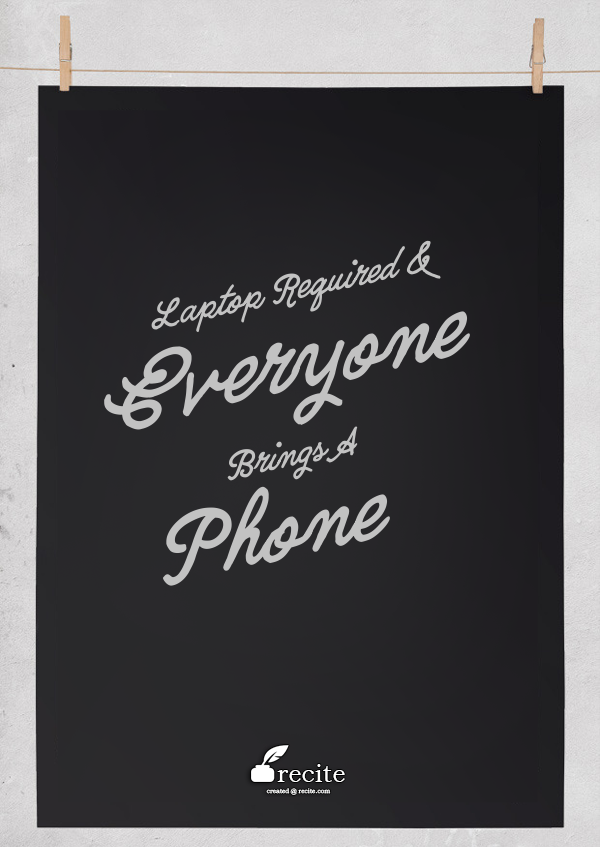If you have ever hosted a professional learning event or training for teachers, you likely called out in the invitation – laptop required – right?
And you still have to plan for when someone forgets their required laptop as well. Have you ever wondered, why do I need to require a laptop? And yet, everyone automatically brings their smartphone?
Teachers in Bring Your Own Devices/Technology (BYOD/T) settings find this to be true too. Middle and High schoolers skew this way. Why are phones more common than laptops? Does that mean anything? Is that good or bad?
And why do we continue to be surprised by this?
Over the last ten years, schools have evolved to deal with the increasing use of {smart}phones in class, but phones continue to be more ubiquitous than laptops. Even a BYOD revolution in public education did not overtake phone usage in schools.
Least Device, Most Impact
For many of our students not yet in charge of their economic standing in life; phones are the most connected device for the least cost. Phone plans may be part of a family or an individual plan, phones have a refresh cycle promoted by the phone carriers, and phones are easier to keep secured. Android phones are less expensive than other devices, opening up options to the less financially capable. The cost of Android phones makes it an attractive choice for price-conscious consumers, but does limit the marketplace that those consumers access.
Teachers work in a corporate-owned, personally enabled (COPE) environment. Educators likely have access to several {Type I} costly, proprietary software systems which make their job(s) easier. So when educators create content and/or attempt to interact with students and parents there is the potential for a gap between COPE and BYOD capabilities. Short of 1:1, students are expected to run into issues of not being able to access teacher-created materials. If 1:1 is not in your school district’s immediate future, content must be written for mobile accessibility.
Ownership of phones outsmarts economic status, to an extent. Few groups are only phone dependent, but they do correlate with educational subgroups of interest. Lower income families still feel the need to own these devices. {Smartphones and Poverty, …a Smartphone doesn’t mean you’re not Poor} Smartphone ownership continues to increase and is an excellent way to get modern devices accessing educational content. If we spend about an hour per day on these phones already, why isn’t school content available via phone?
Teachers have a school-issued laptop, but if they don’t bring it to your professional learning meeting you can bet they have their personal phone. Students may have a laptop, but they are far more likely to have a phone. The content educators make available to all students can be an equalizer in education. Teachers and administrators need to recalibrate content to a mobile consumption model.
More Money, Not the Answer
More money to your district’s Technology Department is not the answer. The answer lies in paying for different content access. THe cost is either training for teachers to develop content or the purchase and training on how to best utilize content.
Money has been given to “the poor” for a long time, and they are still with us. What about building equalizing content which all can access?
Moving Forward in EdTech
How do we empower students through technology? Maybe we can shift our content to mobile devices and make it as accessible as possible.
What optimized for mobile device tools do you use? Have apps for both Apple and Android?
What are your strategies for building accessible content?





2017-02-04 at 8:21 am
I find that a lot of institutes are still behind when it comes to mobile devices, and moving content towards those devices. It seems like they are still stuck in the last century, which does not make sense, because the consumers switch more and more to mobile content which is not about to change.